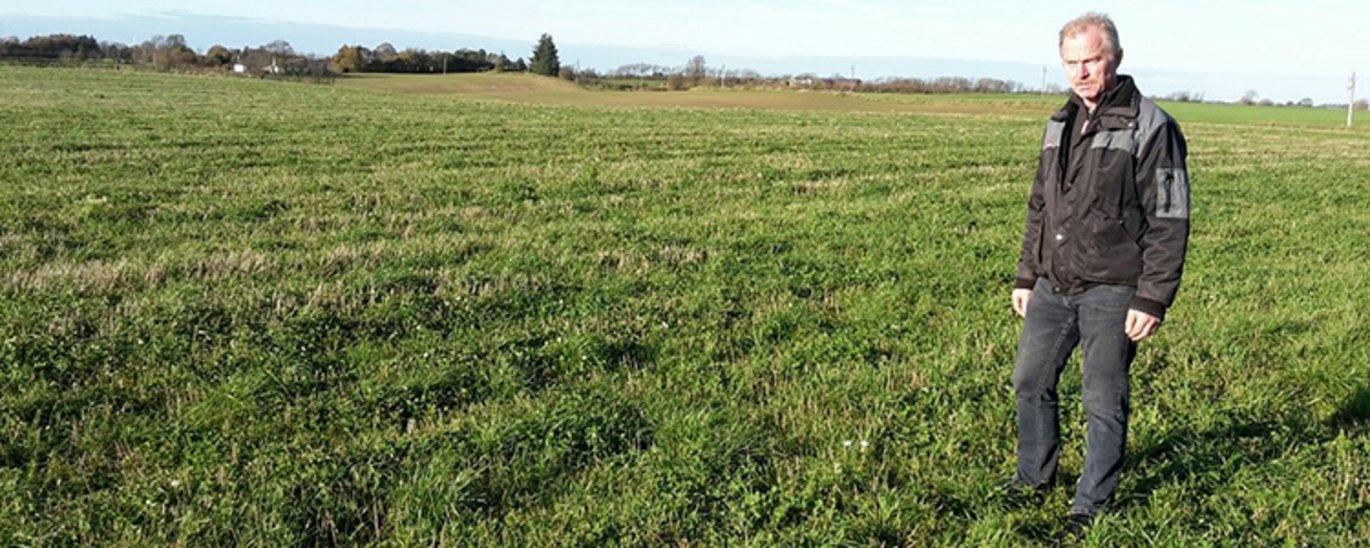A successful grain crop is the best weed management
No need for steel in the field, if cereals establish and grow successfully and crop rotations are diverse. Per Rytter Andersen knows that from many years with organic farming.

Well-established and carefully treated grain crops often lead to effective weed suppression. This is the lesson that Per Rytter Andersen (PRA) has learned from organic farming close to Hobro in Jutland, Denmark.
PRA has participated in the Core Organic Plus project, named PRODIVA, in which weeds were surveyed in more than 200 fields across regions in Finland, Sweden, Germany, Denmark, Poland and Latvia; all bordering the Baltic Sea (http://projects.au.dk/coreorganicplus/research-projects/prodiva/). The project’s main focus is on the importance of crop diversity for weed management. It is assumed that high crop diversity results in a balanced and manageable weed flora but diversity can be more than just different crops in the rotation. It can also be crop species mixtures, variety mixtures and the use of cover crops.
PRA grows 250 ha of which 150-170 ha is grass-clover for feeding his 140 milking cows plus heifers. The crop rotation is typically 3-4 years with grass-clover – spring oat with undersown ryegrass – rye or winter spelt – spring barley with undersown grass-clover – 3-4 years grass-clover again etc. A high proportion of grass-clover, which means that the pressure of annual weeds is moderate and manageable and that creeping thistle can be suppressed by mowing regimes. PRA says that docks are the most problematic weeds on his farm. They constitute a significant challenge on his grass-clover swards, partly because tillage is absent for 3-4 years in a row. Nonetheless, PRA’s fields were among the cleanest in the PRODIVA-survey undertaken in Denmark.
In addition to his diverse crop rotation with perennial crops (grass-clover) and spring and autumn sown cereals often followed by cover crops, PRA emphasises that his consistent delay of the sowing time of cereals explains his good grip on the weeds. The sowing time of both autumn and spring sown cereals is delayed by up to fourteen days in comparison with the recommended sowing time for the region. Well, it makes sense for winter cereals because weed emergence is reduced and delayed because of the drop in soil temperature. However, delayed sowing of spring cereals may not result in fewer weeds but rather in more weeds. PRA says that the higher soil temperature following delayed sowing makes his spring cereals grow faster and more vigorously. The soil is warmer and the mineralisation of nitrogen more advanced with later sowing in spring. ‘Conditions for growth are simply better from the time of sowing, and eventually weed suppression becomes stronger than early sowing would provide’ says PRA. The application of manganese is another important factor explaining the good crop growth on his farm.
Actually, PRA has a flex-tine weed harrow but he only uses it for pre-emergence weed harrowing in spring cereals and for loosening swards. Mouldboard ploughing is an important tool for the control of perennial weeds. Ploughing is done close to crop sowing, which in spring has a strong effect on creeping thistle and sow thistle.
PRA also grows cover crops, often as grass-clover established by itself from the high seed bank of clover and ryegrass seeds. Species mixtures such as barley:pea is sometimes included as a whole crop for silage production, and variety mixtures of spring barley may be grown as well. However, PRA does not expect better weed suppression from species and variety mixtures despite the use of up to four different varieties in a mixture. Suppression of diseases and yield preservation are the main reasons for using mixtures, because PRA believes that varieties and species act complementarily in mixtures.